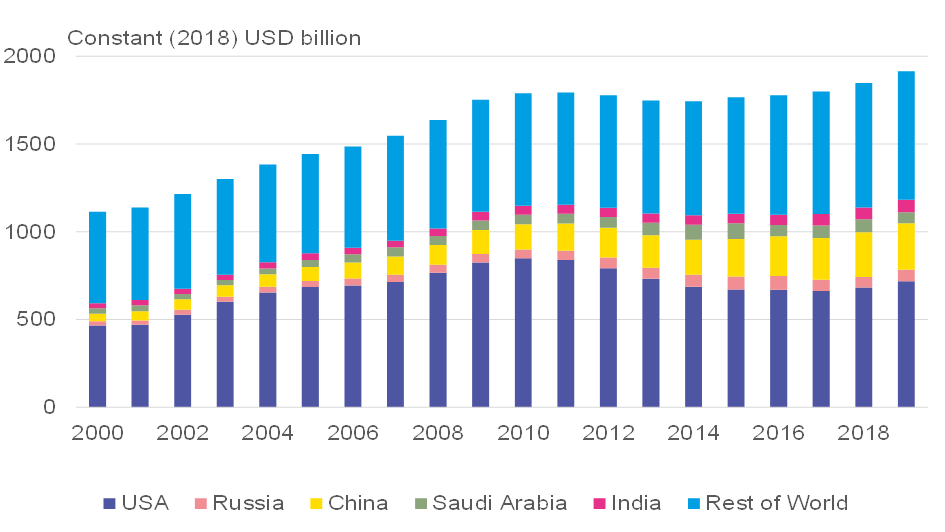BOFIT Weekly Review 19/2020
Rapid growth last year in military spending of Russia and China
Data compiled by the Stockholm Peace Research Institute (SIPRI) show that total military expenditure by national governments last year amounted to 1.92 trillion dollars, a nearly 4 % increase in real terms from 2018 and up by over 7 % from 2010. Spending growth was strong in almost all major countries: United States (up 5.3 %), China (5.1 %), India (6.8 %) and Russia (4.5 %). The world’s biggest military spenders in recent years have been the US, China, India, Russia and Saudi Arabia. Together they account for about two-thirds of global military spending. The United States, unquestionably the world’s biggest military spender last year (732 billion dollars), was followed by China (261 billion dollars). China’s military spending is roughly on par with the total military spending of all EU countries combined.
SIPRI figures show Russian military spending declined sharply between 2016 and 2017, but grew rapidly last year back to 2013 levels (61 billion dollars). The ratio of Russian military spending to GDP (3.9 %) was significantly higher last year than in any other European country, China or the US. About half of Russian military spending in recent years has gone to procurement of equipment and weapons systems, a level high by international standards.
SIPRI compares national military expenditure by converting reported amounts to dollars at current exchange rates. Differences in price levels likely lead to underestimation of the real level of military expenditure in e.g. Russia and China relative to the US. Nevertheless, even if purchasing power parity (PPP) index for military goods existed, the order of the countries in terms of real spending would remain unchanged. Using the overall PPP index for GDP, Russia’s military spending still was less than a quarter of US military spending last year.
Global military spending continues to rise

Sources: SIPRI and BOFIT.